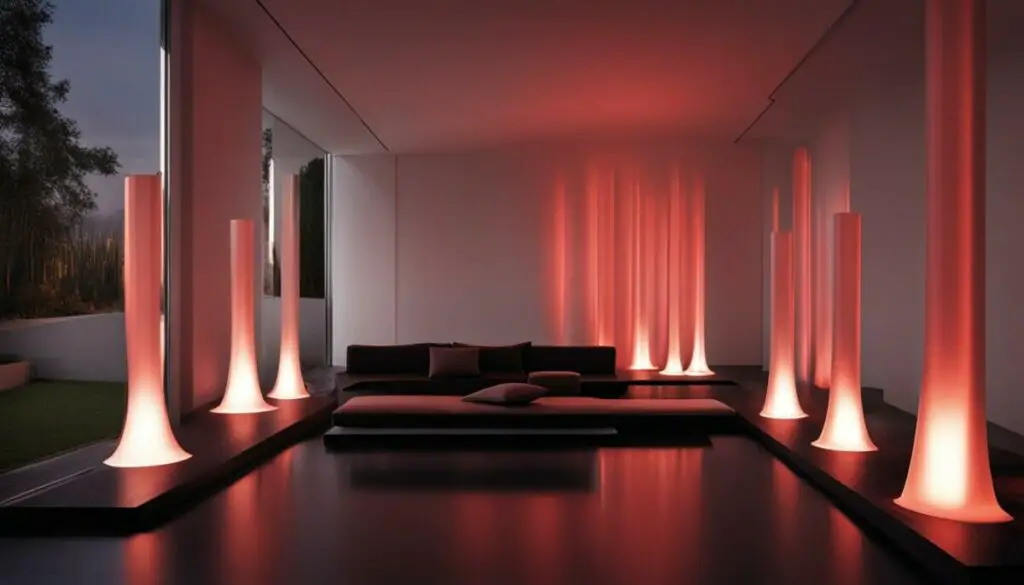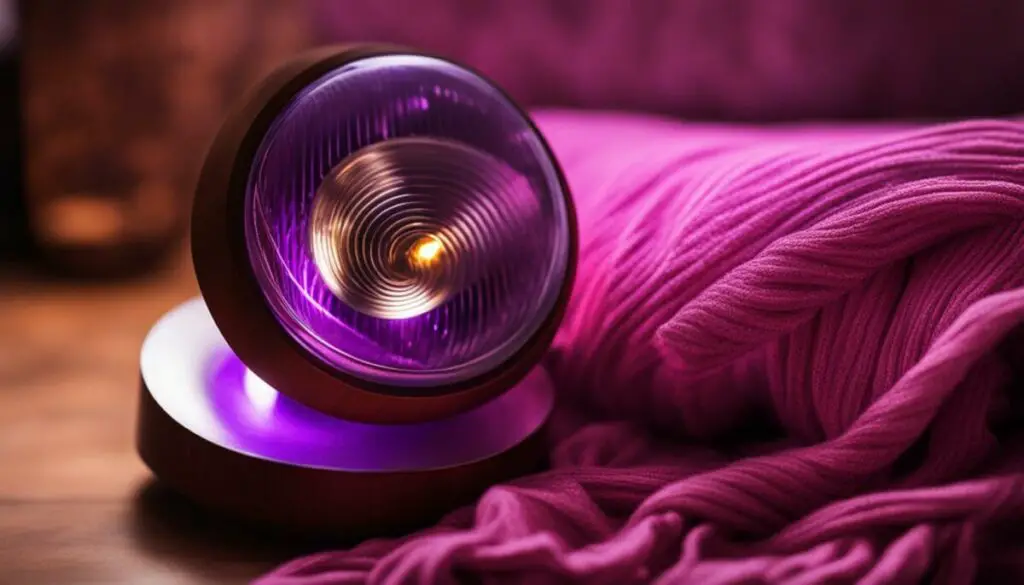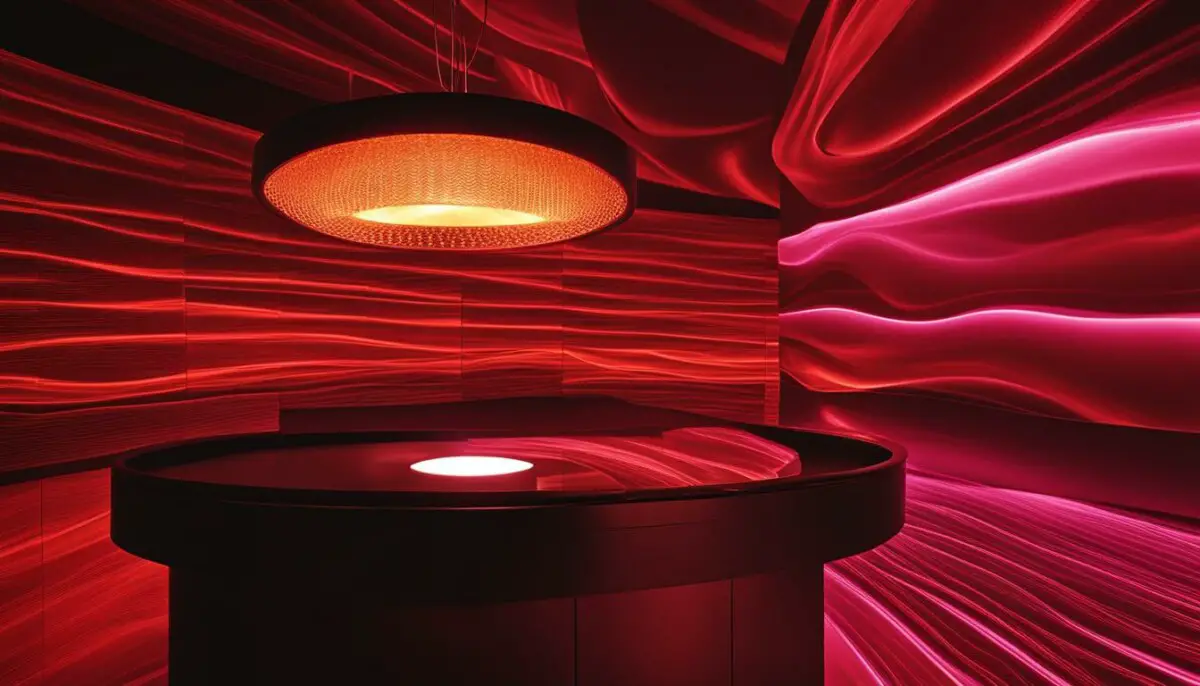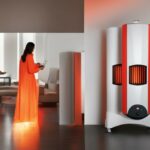Last Updated on 4 months by Francis
Have you ever wondered if infrared lamps and heat lamps are the same thing? While they are often used interchangeably, there are actually some notable differences between the two. Understanding these differences can help you determine which type of lamp is best suited for your specific needs and applications.
Let’s start by clarifying the main distinction. While both infrared lamps and heat lamps emit heat, they do so in different ways. Infrared lamps primarily emit heat through radiation, while heat lamps heat the surrounding air through convection. This means that infrared lamps provide targeted warmth by directly heating objects and surfaces, while heat lamps heat the air around them.
Infrared lamps have a wide range of uses. They can be used to heat rooms, provide targeted warmth to specific areas, and even promote wellness in therapeutic settings. On the other hand, heat lamps are commonly used in livestock and reptile care, food warming in commercial settings, and for specific therapeutic treatments.
When it comes to the benefits, both types of lamps have their advantages. Infrared lamps are known for their energy efficiency, heating objects directly and reducing energy waste. They also improve air quality, as they don’t dry out the air or raise dust. Heat lamps, on the other hand, provide warmth through convection and are versatile in various applications.
By understanding the differences and benefits of infrared lamps and heat lamps, you can make an informed choice when selecting the right lamp for your needs. Whether you’re looking for targeted warmth, energy efficiency, or versatility, there is a lamp that can meet your requirements.
Contents
Key Takeaways:
- Infrared lamps primarily emit heat through radiation, while heat lamps heat the surrounding air through convection.
- Infrared lamps provide targeted warmth by directly heating objects and surfaces.
- Heat lamps are commonly used in livestock and reptile care, food warming, and specific therapeutic treatments.
- Infrared lamps are energy-efficient, improve air quality, and have various applications.
- Understanding the differences and benefits can help you choose the right lamp for your specific needs.
How Do Infrared Lamps Work?

Infrared lamps work by emitting heat through radiation. They generate infrared rays that pass through the air without heating it, similar to the way the Sun’s rays warm our skin. These rays directly heat objects and surfaces in their path, providing targeted warmth.
Unlike traditional heating systems that rely on convection to heat the air, infrared lamps do not rely on air movement to distribute heat. This makes them more efficient and allows for uniform heating in a room without creating hot and cold spots.
Infrared lamps can be used to heat a single room or even an entire house, providing a comfortable and energy-efficient heating solution.
Advantages of Infrared Lamps:
- Efficient heat generation through radiation
- Targeted warmth for objects and surfaces
- No reliance on air movement for heat distribution
- Uniform heating without hot and cold spots
- Energy-efficient heating solution
With their unique heating mechanism, infrared lamps offer numerous advantages in terms of heat generation, targeted warmth, and energy efficiency.
Benefits of Infrared Lamps
Infrared lamps offer numerous benefits compared to traditional heating systems. These lamps provide efficient heating, comfortable warmth, improved air quality, and energy savings. Let’s take a closer look at these advantages:
- Efficient Heating: Infrared lamps emit up to 96% of their heat as radiation, compared to only 50% for traditional electric lamps. This high heat emission means that more energy is used to directly heat objects and surfaces, resulting in faster and more effective warmth.
- Comfortable Warmth: Unlike traditional heating systems that heat the air, infrared lamps heat objects directly. This not only provides a more comfortable and consistent warmth, but it also eliminates the drying effect on the air. Additionally, because infrared lamps don’t rely on air circulation to distribute heat, they don’t raise dust particles, making them ideal for people with respiratory issues.
- Improved Air Quality: By not drying out the air or creating dust, infrared lamps contribute to improved air quality. This can be particularly beneficial for individuals with allergies or respiratory conditions, as it helps maintain a cleaner and healthier environment.
- Energy Savings: Infrared lamps require less energy to achieve the same level of warmth as traditional heating systems. This translates into significant energy savings and lower utility bills over time. By opting for infrared lamps, you can enjoy a cozy and warm space while reducing your environmental impact and saving money.
“Infrared lamps offer efficient heating, comfortable warmth, improved air quality, and energy savings.”
With these benefits in mind, it’s clear why infrared lamps are becoming a popular choice for both residential and commercial heating needs. Their ability to provide efficient and comfortable warmth, along with the added advantages of improved air quality and energy savings, make them an excellent alternative to traditional heating systems.
| Benefit | Description |
|---|---|
| Efficient Heating | Infrared lamps emit up to 96% of their heat as radiation, resulting in faster and more effective warmth compared to traditional electric lamps. |
| Comfortable Warmth | Infrared lamps heat objects directly, providing a more comfortable and consistent warmth without drying out the air or raising dust. |
| Improved Air Quality | By not drying out the air or creating dust, infrared lamps contribute to improved air quality, making them especially beneficial for individuals with respiratory issues. |
| Energy Savings | Infrared lamps require less energy to achieve the same level of warmth as traditional heating systems, resulting in lower energy consumption and cost savings. |
Common Uses of Infrared Lamps

Infrared lamps have a wide range of applications. They are commonly used for:
- Therapeutic treatments: Infrared lamps provide targeted warmth, making them ideal for therapeutic treatments in spas, wellness centers, and sports facilities. The infrared rays penetrate deep into the skin, promoting relaxation, pain relief, and improved circulation.
- Livestock care: Infrared lamps are widely used in livestock farming to provide essential warmth for newborn animals, such as piglets, chicks, and calves. The targeted heat helps maintain the optimal temperature required for their well-being and growth.
- Reptile care: Reptiles, such as snakes and lizards, require specific environmental conditions to thrive. Infrared lamps simulate the natural warmth they would experience in their natural habitats, ensuring their comfort and overall health.
- Food warming: In commercial foodservice settings, infrared lamps are used to keep food warm on buffet lines or in warming cabinets. The controlled heat provided by the lamps helps maintain the temperature and freshness of the food, ensuring a pleasant dining experience for customers.
In addition to these common uses, infrared lamps can also be utilized in residential settings. They can be installed in bathrooms to provide warmth before use and prevent condensation on surfaces. Furthermore, homeowners can use them for general heating or for specific areas that require focused warmth, such as nurseries, garages, or outdoor patios.
Overall, infrared lamps offer versatile heating solutions that cater to various needs, from therapeutic treatments to livestock care and food warming. Their targeted warmth and energy efficiency make them indispensable in a wide range of applications.
| Common Uses | Benefits |
|---|---|
| Therapeutic treatments | – Provides targeted warmth for relaxation – Offers pain relief and improved circulation |
| Livestock care | – Maintains optimal temperature for newborn animals – Promotes healthy growth and well-being |
| Reptile care | – Simulates natural warmth for reptile habitats – Ensures comfort and overall health |
| Food warming | – Keeps food warm on buffet lines or in warming cabinets – Maintains temperature and freshness |
| Residential heating | – Provides warmth in bathrooms and specific areas – Offers energy-efficient and focused heating |
TheraBulb Infrared Lamps: Unique Features and Uses

TheraBulb offers a range of infrared lamps specifically designed for targeted therapy and wellness treatments. These lamps go beyond the functionality of general-purpose heat lamp bulbs, providing unique features that enhance the therapeutic experience.
Safe and Healthy: TheraBulb infrared lamps are free of hazardous substances, ensuring a safer and healthier treatment. With TheraBulb, you can have peace of mind knowing that you are using a lamp that prioritizes your well-being.
Lab-Verified Output: TheraBulb infrared lamps are lab-verified for their output, providing you with valuable data on spectral distribution, maximum operating temperature, and irradiance. This information allows you to make informed decisions about your therapy and ensure optimal results.
Targeted Therapy: TheraBulb infrared lamps are often used in home saunas and by individuals seeking red light and near infrared energy for approved therapeutic treatments. Whether you are looking to relax and rejuvenate or target specific areas for healing, TheraBulb has you covered.
Wellness Treatments: Incorporating TheraBulb into your wellness routine can enhance the benefits of your treatments. Whether it’s for pain relief, muscle relaxation, or overall well-being, these lamps provide the warmth and energy you need to support your wellness goals.
Experience the unique features and benefits of TheraBulb infrared lamps for targeted therapy and wellness treatments. Enhance your home sauna experience, promote relaxation, and rejuvenate your body with the power of infrared technology.
TheraBulb Infrared Lamps vs. Standard Heat Lamp Bulbs
While both TheraBulb infrared lamps and standard heat lamp bulbs emit heat, they serve different purposes. TheraBulb is designed specifically for targeted therapy and wellness treatments, providing the unique features and benefits mentioned above. On the other hand, standard heat lamp bulbs are more commonly used in applications such as livestock care, reptile care, and food warming.
| TheraBulb Infrared Lamps | Standard Heat Lamp Bulbs |
|---|---|
| Designed for targeted therapy and wellness treatments | Commonly used in livestock care, reptile care, and food warming |
| Lab-verified output for precise control | Simplified setup and usage |
| Safe and healthy, free of hazardous substances | Versatile usage in various applications |
Heat Lamp Bulbs: General Uses and Features

Heat lamp bulbs have been widely used for various purposes for many years. These bulbs are highly versatile and find applications in livestock care, reptile care, and food warming in the foodservice industry. They provide the necessary warmth and lighting for animals, ensuring their well-being and comfort.
One of the key uses of heat lamp bulbs is in livestock care. Farmers and ranchers commonly rely on heat lamp bulbs to keep their livestock warm during colder months or in enclosed spaces. These bulbs emit a gentle, infrared heat that mimics the warmth provided by the sun, thereby creating a comfortable environment for the animals.
In reptile care, heat lamp bulbs are essential for maintaining the optimal temperature within reptile habitats. Reptiles, such as snakes and lizards, require specific temperature ranges to thrive, and heat lamp bulbs assist in providing the necessary warmth. By simulating natural heat sources, these bulbs help regulate the reptiles’ body temperature and support their overall health.
The foodservice industry also heavily relies on heat lamp bulbs for food warming purposes. These bulbs are commonly used in buffet lines or warming cabinets to keep food at the desired serving temperatures. Heat lamp bulbs emit a controlled heat that ensures food stays warm and appetizing without sacrificing quality.
To ensure food safety, some heat lamp bulbs are equipped with a shatter-resistant coating, such as PFA (Teflon). This coating acts as a protective barrier, preventing glass shards from contaminating the food in the event of bulb breakage. It provides an additional layer of security and peace of mind, particularly in commercial food settings.
| General Uses of Heat Lamp Bulbs | Features |
|---|---|
| Livestock care | Provides necessary warmth for animals |
| Reptile care | Maintains optimal habitat temperature for reptiles |
| Food warming | Keeps food warm at serving temperatures |
Heat lamp bulbs offer a reliable and effective solution for applications that require controlled heat and warmth. Their versatility and ease of use make them an ideal choice for a range of industries, from agriculture to foodservice. Whether it’s providing comfort for animals or ensuring food stays warm and enticing, heat lamp bulbs are a valuable tool in various settings.
Infrared Lamps vs Heat Lamp Bulbs: Making the Right Choice

When it comes to choosing between infrared lamps and heat lamp bulbs, it’s crucial to consider your specific requirements and needs. By making an informed decision, you can ensure that you select the right lamp for your intended purpose.
If you are looking for targeted therapy or wellness treatments, infrared lamps, such as the TheraBulb, are designed specifically for these purposes. TheraBulb infrared lamps provide lab-verified data on their output, giving you the confidence to make a data-driven decision. These lamps offer unique features and are often used in home saunas and for various therapeutic treatments.
On the other hand, if your primary concern is providing warmth and controlled heat for applications like livestock care, reptile care, or food warming, heat lamp bulbs are a suitable option. These bulbs are commonly used in these specific areas and provide the necessary heat to meet your warming needs.
By understanding the unique features, uses, and applications of each type of lamp, individuals can make a well-informed decision based on their specific requirements. Whether it’s for targeted therapy or warming needs, choosing the right lamp is crucial to achieving the desired results.
Be sure to evaluate your specific requirements and make a data-driven decision that aligns with your intended use. When it comes to infrared lamps vs heat lamp bulbs, a thoughtful and informed choice will help you make the most of your warming and therapeutic needs.
| Factors to Consider | Infrared Lamps | Heat Lamp Bulbs |
|---|---|---|
| Primary Use | Targeted therapy, wellness treatments | Livestock care, reptile care, food warming |
| Lab-Verified Data | Available for specific models like TheraBulb | N/A |
| Unique Features | Safe, free of hazardous substances | N/A |
| Energy Efficiency | Can heat objects directly, saving energy | N/A |
| Usage Area | Home saunas, therapeutic centers | Livestock farms, restaurants |
Other Applications of Infrared Lamps
In addition to the common uses mentioned earlier, infrared lamps have found their way into various other applications. Their versatility and benefits extend beyond traditional heating, making them valuable in different settings.
Bathrooms:
Infrared lamps can be a great addition to bathrooms. They provide a quick way to warm up the space before use and help prevent condensation on surfaces. With their targeted warmth, infrared lamps can create a cozy and comfortable environment for those early mornings or chilly winter days.
Paint Curing:
Infrared lamps play an essential role in paint curing processes. By emitting the right amount of heat, they ensure proper drying and hardening of paint, resulting in a smooth and durable finish. Whether it’s for industrial or DIY projects, infrared lamps contribute to achieving high-quality paintwork.
Medical Treatment:
The medical field also benefits from the therapeutic properties of infrared lamps. These lamps are utilized for pain relief and muscle relaxation, providing soothing warmth for various conditions. From relieving muscle aches to aiding in the recovery process, infrared lamps offer a non-invasive and drug-free option for promoting well-being.
Mold Prevention:
Mold growth can be a common problem in damp areas. Infrared lamps can help prevent the growth of mold by maintaining optimal humidity levels. The warmth generated by infrared lamps inhibits the conditions necessary for mold development, keeping spaces dry and mold-free.
These diverse applications highlight the versatility of infrared lamps and their ability to enhance comfort, convenience, and well-being in various environments.
Other Applications of Infrared Lamps
| Application | Description |
|---|---|
| Bathrooms | Provide warmth and prevent condensation in bathrooms. |
| Paint Curing | Ensure proper drying and hardening of paint. |
| Medical Treatment | Offer pain relief and muscle relaxation. |
| Mold Prevention | Maintain optimal humidity levels to prevent mold growth. |
Installation and Maintenance of Infrared Lamps
Installing and maintaining infrared lamps is a breeze. With their easy setup and versatility, these lamps can be effortlessly mounted on walls or ceilings using the provided hooks or brackets. No complex installation processes or additional electrical systems are required, as infrared lamps operate on a standard 230 V power supply. Their adaptability allows them to seamlessly blend into various environments and can be easily moved if needed.
One of the advantages of infrared lamps is their low maintenance. Unlike traditional heating systems, these lamps do not accumulate soot or create dust, making them hassle-free options. There is no need for specialized technicians or periodic maintenance, reducing overall maintenance costs and ensuring a hassle-free experience. Simply install the lamps, sit back, and enjoy the cozy warmth they provide.
Experience the convenience and simplicity of infrared lamp installation and maintenance, and say goodbye to the complexities of traditional heating systems.
Conclusion
After exploring the differences and applications of infrared lamps and heat lamps, it is clear that they serve distinct purposes in heating and therapeutic settings. Infrared lamps, with their ability to directly heat objects and surfaces through radiation, provide targeted warmth, improved air quality, and energy savings. They are versatile and can be used in various applications, from residential heating to therapeutic treatments.
On the other hand, heat lamps primarily heat the surrounding air through convection, making them suitable for livestock care, reptile care, and food warming. They offer controlled heat and are commonly used in commercial settings where food temperature maintenance is essential.
When making a choice between infrared lamps and heat lamps, it is crucial to consider specific requirements and applications. By understanding the differences and benefits of each type of lamp, individuals can make informed decisions that best meet their heating or therapeutic needs. Whether it’s creating a cozy atmosphere at home, providing targeted warmth in therapy sessions, or ensuring the well-being of animals, understanding the distinctions between infrared lamps and heat lamps will aid in making the right choice.
FAQ
Are infrared lamps and heat lamps the same?
No, they are not the same. While both emit heat, infrared lamps primarily emit heat through radiation, whereas heat lamps heat the surrounding air through convection.
What is the difference between infrared lamps and heat lamps?
Infrared lamps generate heat through radiation, directly heating objects and surfaces. Heat lamps, on the other hand, heat the surrounding air through convection.
What are the similarities between infrared lamps and heat lamps?
Both infrared lamps and heat lamps are used to emit heat, and they can both provide warmth in different applications.
What are the uses of infrared lamps?
Infrared lamps can be used for heating rooms, providing targeted warmth, therapeutic treatments, livestock care, reptile care, food warming, and more.
What are the uses of heat lamps?
Heat lamps are commonly used in livestock care, reptile care, and food warming in commercial settings.
What are the benefits of infrared lamps?
Infrared lamps offer benefits such as efficient heating, improved air quality, energy savings, and versatile applications.
What are the benefits of heat lamps?
Heat lamps provide controlled heat and are commonly used in livestock care, reptile care, and food warming.
How do infrared lamps work?
Infrared lamps emit heat through radiation, directly heating objects and surfaces without relying on air movement to distribute heat.
What are the common uses of infrared lamps?
Infrared lamps are commonly used for therapeutic treatments, livestock care, reptile care, and food warming in commercial settings.
What are the unique features and uses of TheraBulb infrared lamps?
TheraBulb infrared lamps are designed for targeted therapy and wellness treatments, providing lab-verified output data and a safer experience.
What are the general uses and features of heat lamp bulbs?
Heat lamp bulbs are commonly used in livestock care, reptile care, and food warming, and some have a shatter-resistant coating for food safety.
How do I choose between infrared lamps and heat lamp bulbs?
Consider specific requirements and needs. Infrared lamps are ideal for targeted therapy, while heat lamp bulbs are suitable for providing warmth and controlled heat.
What are the other applications of infrared lamps?
In addition to their common uses, infrared lamps can be used in bathrooms, paint curing processes, medical treatments, and mold prevention.
How easy is it to install and maintain infrared lamps?
Installing infrared lamps is relatively easy, and they require minimal maintenance due to their low accumulation of soot and dust.
What is the conclusion regarding infrared lamps and heat lamps?
Infrared lamps and heat lamps are different in terms of heat generation and distribution. Understanding their differences and benefits can help individuals make an informed choice for their specific requirements.








